Affiliate links on Android Authority may earn us a commission. Learn more.
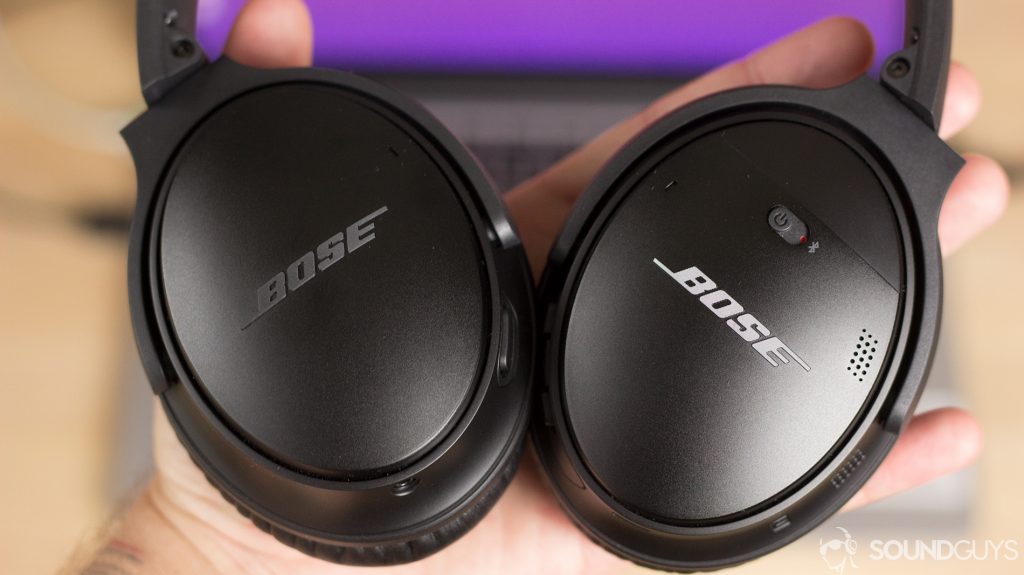
Bose QuietComfort 35 II review: Great headphones that hold up over time
October 17, 2021
Bose Bose QuietComfort 35 II
What we like
What we don't like
Bose Bose QuietComfort 35 II
The Bose QuietComfort 35 II have been around for a few years, so why would anyone consider buying them today? Well, this old dog has plenty of new tricks, thanks to countless firmware updates, and a pleasing design. If you value comfort above all else, these may be the best headphones you can get. Let’s see how they hold up, especially compared to newer models like the Bose Noise Cancelling Headphones 700.
Update, October 17, 2021: This review was updated to address the Bose QuietComfort 45 as an alternative.
Who should get the Bose QC 35 II?
- Remote workers will love the Bose QC 35 II, as they’re some of the most comfortable headphones around. When you spend all day in conference calls, you want your headset to be functional and comfortable, and Bose ticks both of these boxes.
- Frequent flyers need these noise-cancelling headphones because they negate background noise very well. Sure, they’re not technically the best year’s after their debut, but they hold their own against the very best noise-cancelling headphones.
- Students should save up for these headphones, because they can often be found for $200 USD, making them one of the best bang-for-your-buck ANC headsets around.
What is it like to use the Bose QuietComfort 35 II?
The Bose QC 35 II maintain the slim profile of the original Bose QuietComfort headphones, and as the name implies, these cans are very comfy. You can wear these for hours, even with glasses. They’re also super durable and can be bent and twisted in a bunch of ways. If you’re in a rush and need to jam them into your bag, you can do so with a clear conscious.
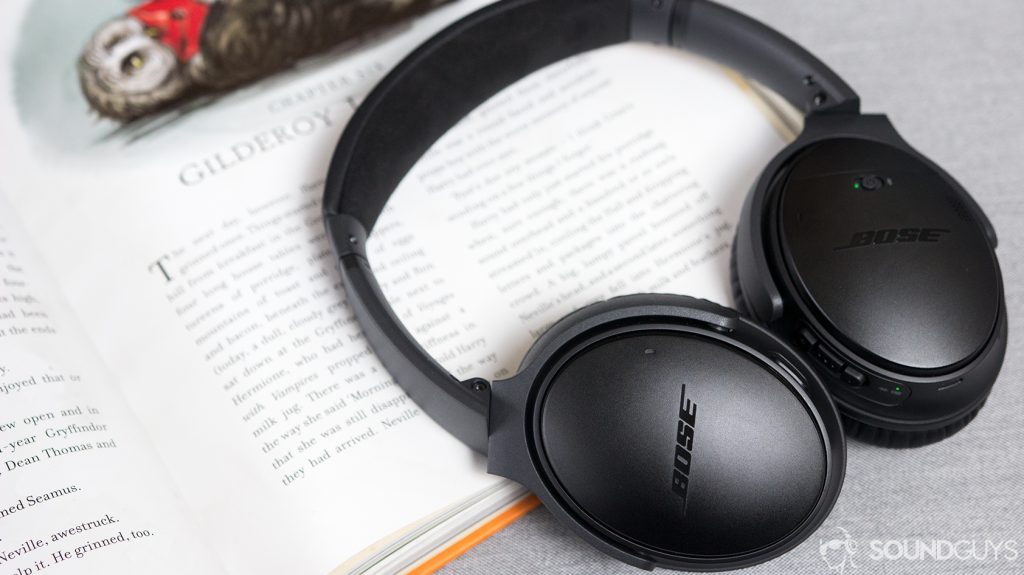
You should still use the provided carrying case, though; after all, these are an investment. The ear cups rotate, so you can lay the headphone flat against a table. You can even ball the ear cups toward the headband for a super compact form factor. Considering the flexibility and lightweight design, the Bose QC 35 II really are one of the best travel buddies.
The ear cups house a few controls like the Action button and multifunction buttons, which we’ll get to late. You also get volume buttons and a power switch on the right earcup. The right ear cup houses a microUSB charging port and headphone jack, so you can hardwire them to your phone, if you still have that option.
Do the headphones support Google Assistant, Siri, Alexa?
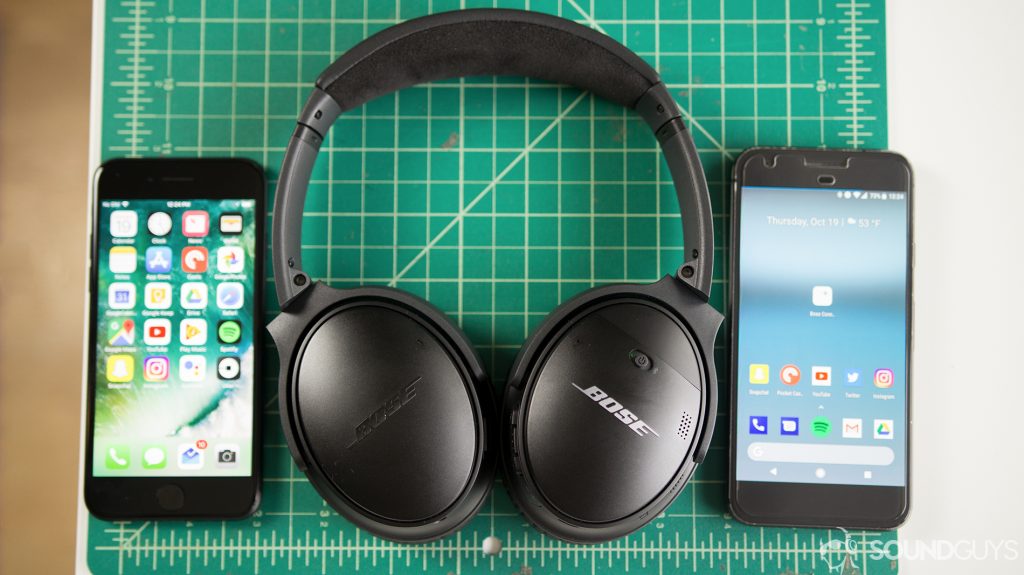
You can use the Bose QuietComfort 35 II with any virtual assistant, including Google, Siri, and Alexa. You can choose your preferred smart assistant in the Bose Connect+ app. If you choose Google Assistant, you can toggle the live readout of notifications; Google even has a dedicated help page for the QC 35 II.
No matter which virtual assistant you choose, they all function virtually the same way: you can ask silly questions, set reminders, get step-by-step recipe instructions, and more. The Bose QC 35 II smart assistant mechanism is very responsive, and it starts listening as soon as you press the dedicated Action button.
How to get Siri on the Bose QC 35 II
Now you’re probably wondering, “Well, what if I have an iOS device?” And if you’re rocking an iOS device you too can have the best of both worlds, kind of. You’ll have to download the Google Assistant app on your iPhone in order for the Action Button to pull it up, and then you can access Siri by holding down the multifunction button.
Should you download the Bose Connect+ app?
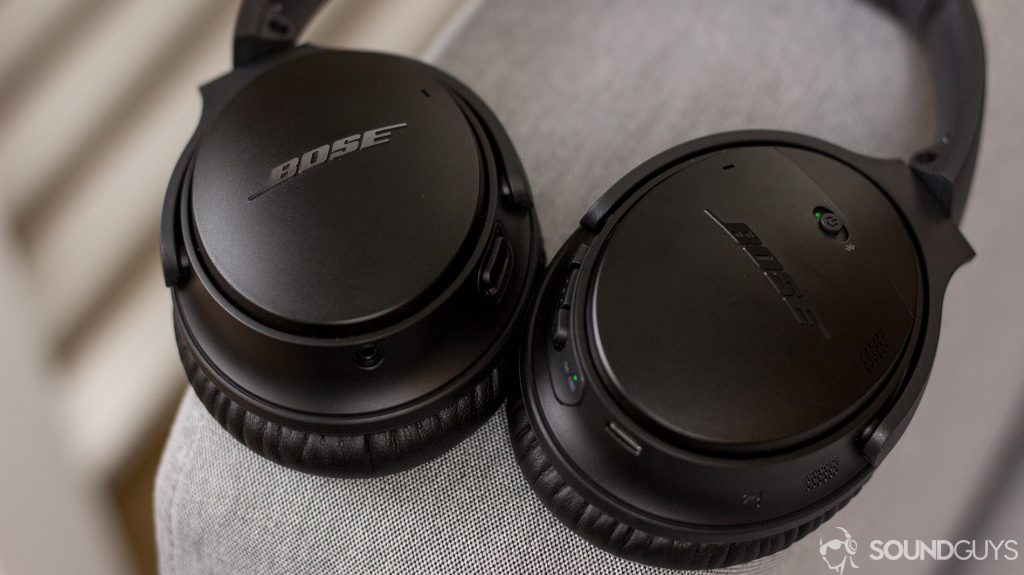
The Bose Connect+ app is absolutely necessary if you want access to firmware updates, and the ability to remap the onboard controls. In the Bose Connect+ app you can remap the Action Button on the left earcup to control the active noise cancelling which now comes in three levels: high, low, or off. You’ll still be able to access the Google Assistant by holding down the multifunction button on the right earcup for a second. So you get the best of both worlds.
Do the Bose QuietComfort 35 II stay connected?
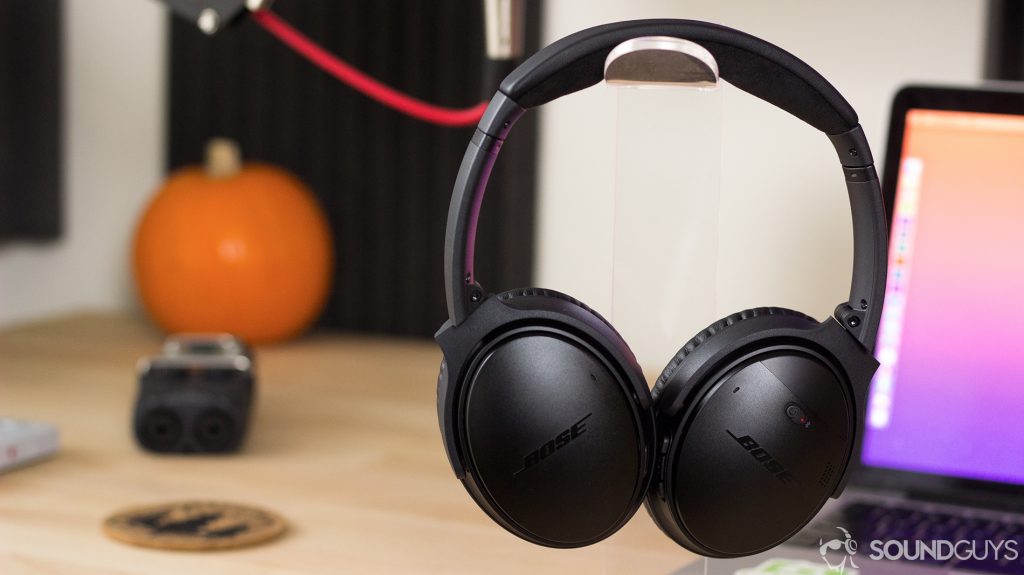
As far as connection goes these are just as strong and consistent as the original version of these. I had no problem with connection strength whether my phone was in my pocket or across the room. Extreme range testing aside, I only 3 skips in regular usage over the course of about a week, so not bad at all. This solid connection strength applied to phone calls as well and I had no dropped calls or issues here. If call quality is important to you these won’t let you down. On top of all that, when you turn them on they seamlessly connect almost Airpod-like. Super quick.
So if you’re wondering why we spent so much time on the new Action Button and the connection aspect of these headphones, it’s because the addition of the Google Assistant/ANC controls and its dedicated hardware button is basically the only difference between these and the Series I QC35’s. So everything else about these including the build quality, sound quality, and battery remains pretty much the same. But in case you missed our first review, we’ll dig into each of these now.
Does the active noise-cancelling actually work?
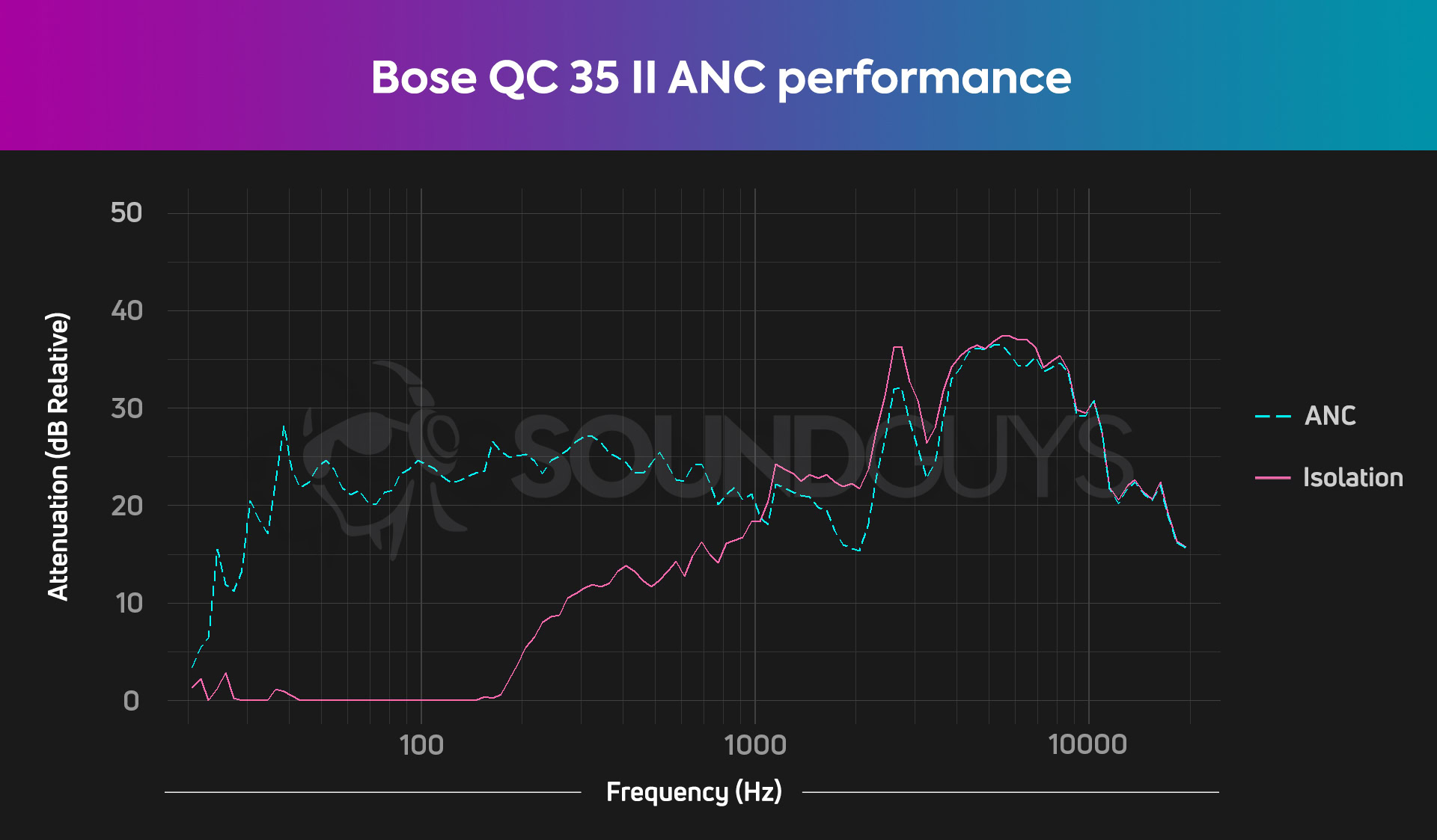
Bose is one of the best brands in the business when it comes to noise-cancelling headphones. Its top-end technology has advanced even further in the past few years, but the QuietComfort 35 II are still very effective. Low-frequency sounds are quieted to sound about half as loud as they would sans-headphones, and midrange frequency sounds only come through one-fourth as loud as they otherwise would.
To get this kind of performance from your headphones, you need to make sure you find a proper fit. The ear pads must fully encompass your ears without any gaps between the padding and your skull. Fortunately, the QC 35 II ear pads leave plenty of room, even for larger ears, but some over-ear headphones fit more like on-ears, which can negatively impact ANC performance.
Can a firmware update make your Bose QuietComfort 35 II sound worse? How do you fix it?
Not too long ago, there were user reports of a firmware update that caused the QC 35 II headphones to misbehave. Some users felt the headphones sounded much worse after the update, while others said the noise-cancelling was rendered nearly ineffective. If this happened to you, here are a few easy steps to fix the issue.
- Turn off the headphones.
- Plug the QC 35 II into a wall charger for at least five seconds, then remove the cable.
- Connect the headphones to your computer via a microUSB cable, and go here in a browser.
- Download and run the Bose Updater app on your computer.
- Update the headphones using your computer to the latest firmware manually.
How long does the battery last?
Battery life for the Bose QC35 II also hasn’t changed from the first model, with an estimated 20 hours. That’s enough to do a coast to coast trip in the US three or four times. Not bad. In our testing we got exactly 15 hours, 46 minutes on about 80% battery. Unless you play your music at max volume, which you shouldn’t, battery life should be perfectly serviceable.
Do the Bose QC 35 II sound good?
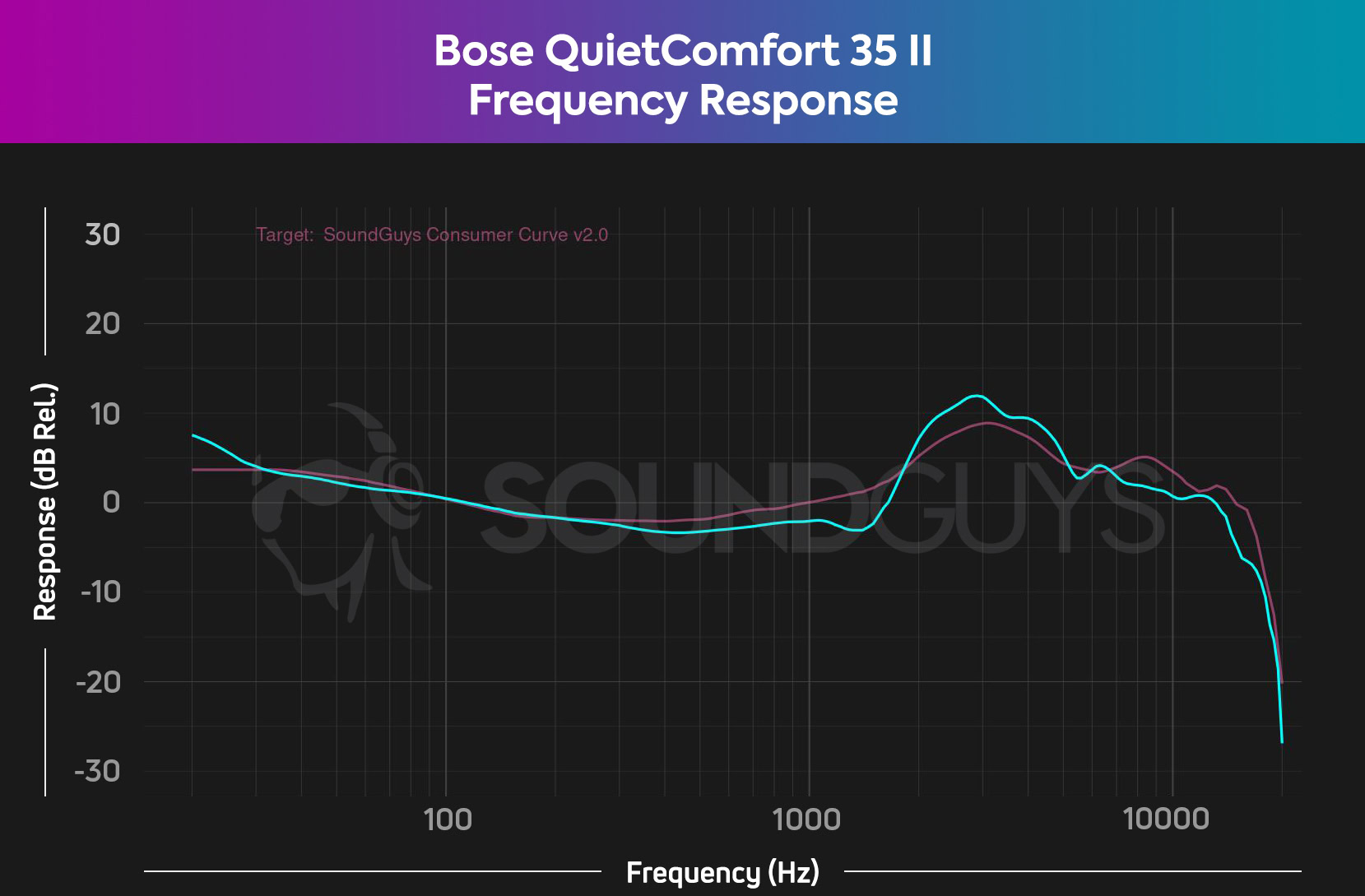
The Bose QuietComfort 35 II noise-cancelling headphones sound great, even though they only support two Bluetooth codecs: AAC and SBC. The upper-bass and midrange frequency response represents audio as its meant to sound. Sub-bass notes receive some modest emphasis to add a bit more presence to your favorite tracks. You can tinker with the EQ via third-party app, but Bose doesn’t offer an EQ module in its Bose Connect+ app.
No matter what your music tastes, the Bose QC 35 II will make the music sound good, or at least how it’s supposed to. The treble response deviations make it easier to hear detail from your music, think harmonic resonances from string instruments, or your favorite singer’s vibrato.
How do the Bose QuietComfort 35 II compare to the Bose QuietComfort 45?
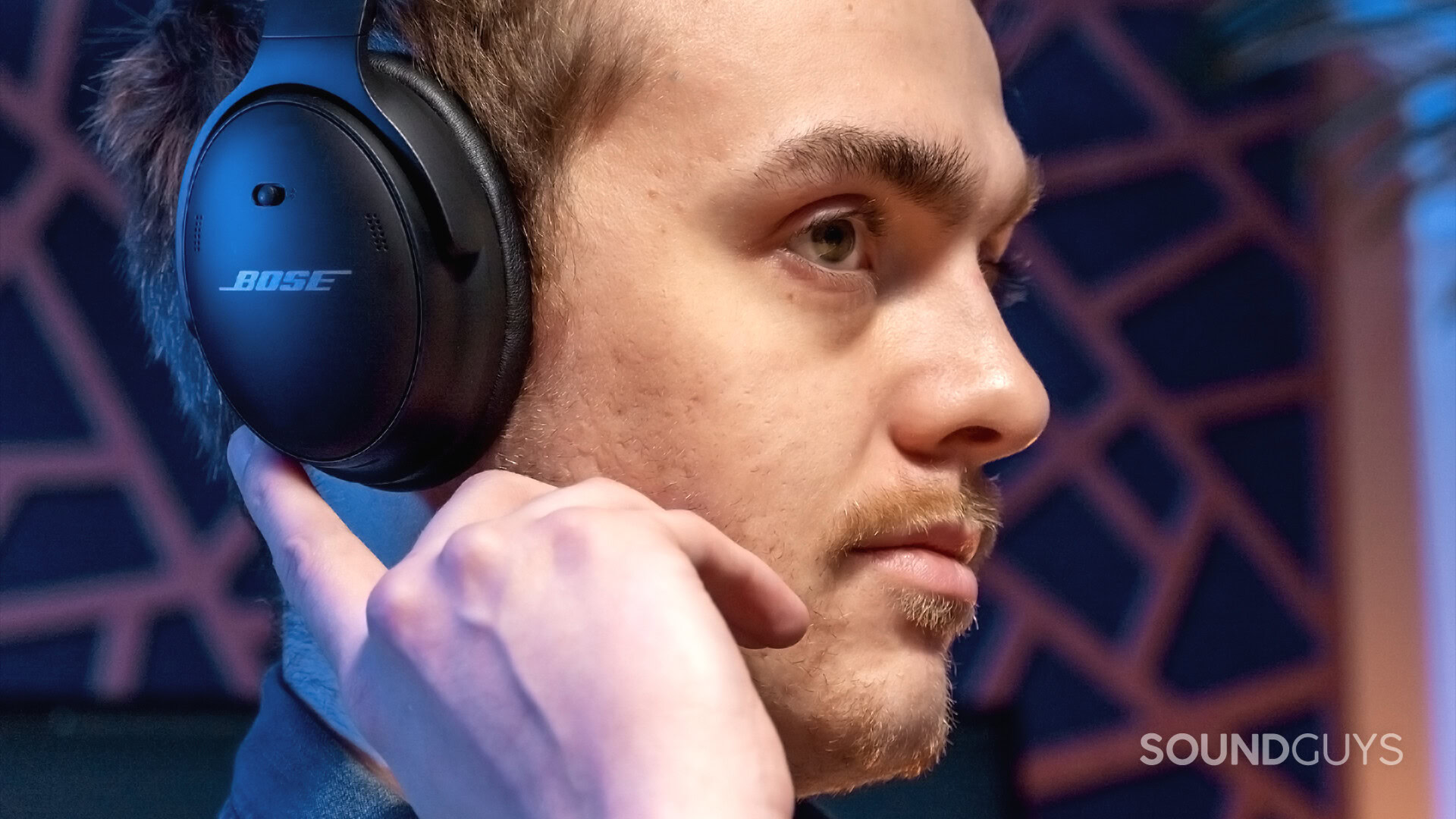
The Bose QuietComfort 45 has much better active noise-cancelling than the Bose QC 35 II, but ANC performance doesn’t tell the whole story. The new QC 45 headphones have a wonky frequency response that boosts treble notes much more than the QC 35 II or the Bose Noise Cancelling Headphones 700 do. This sound profile, combined with the inability to equalize the sound, makes the QC 45 somewhat unappealing to those who value sound quality above all else.
There are still redeeming qualities to the Bose QC 45 though: these are incredibly comfortable headphones with solid microphone quality and good battery life.
Should you buy the Bose QuietComfort 35 II?
In the end the Bose QC35 II headphones are basically the same as the original, except now they’re just a little better with the addition of the Assistant and active noise cancelling profiles. The ANC is still one of the best you can get at any price point, and because nothing else about these has changed they’re still just as amazingly comfortable as they were before.
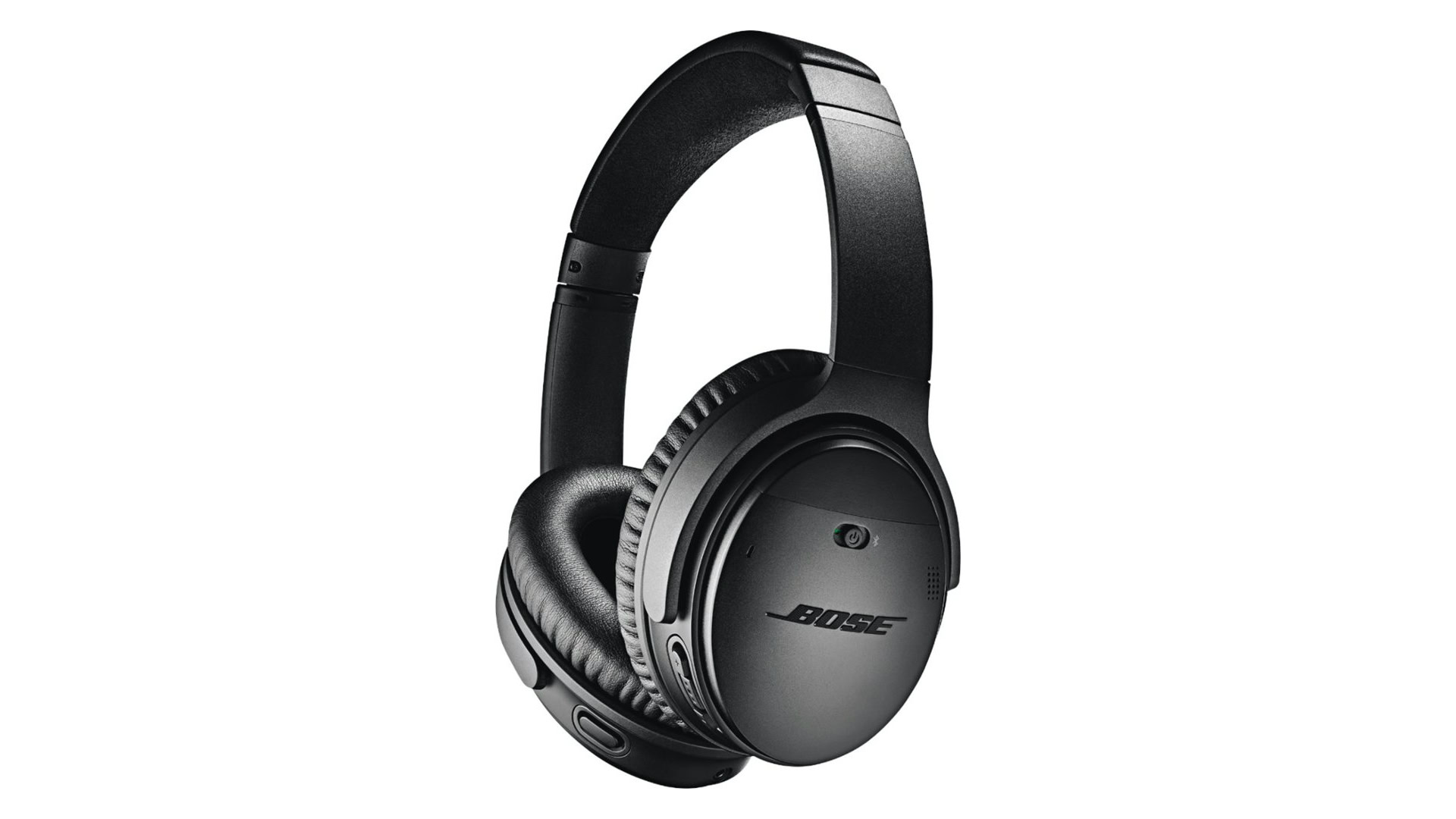
Bose QuietComfort 35 II vs. Bose Noise Cancelling Headphones 700
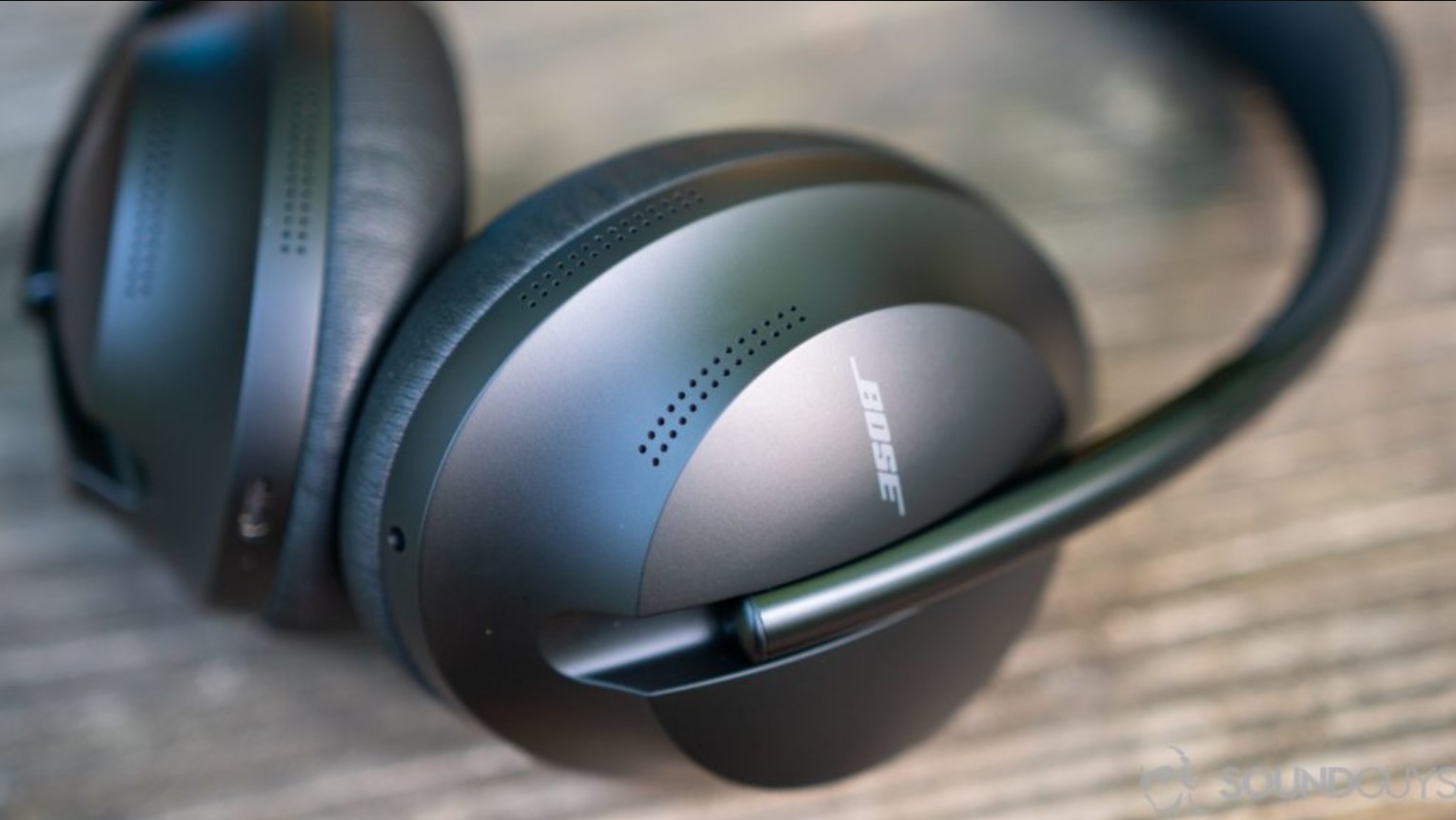
The Bose Noise Cancelling Headphones 700 feature a complete redesign compared to the QC 35 II. Bose cranked up the noise-cancelling performance with its shiny, spaceship-looking flagship. You can take greater control of the ANC intensity, but this requires you to download the Bose Music app. Other improvements over the QuietComfort 35 II include an in-app equalizer, and microphone quality.
Don’t miss: Bose Noise Cancelling Headphones vs. Sony WH-1000XM4
Of course, this comes at a hefty price, and the Bose QC 35 II are still very good by today’s standards. Plus, they’re more comfortable than the latest noise-cancelling headset.
Should you buy the Sony WH-1000XM4 instead?
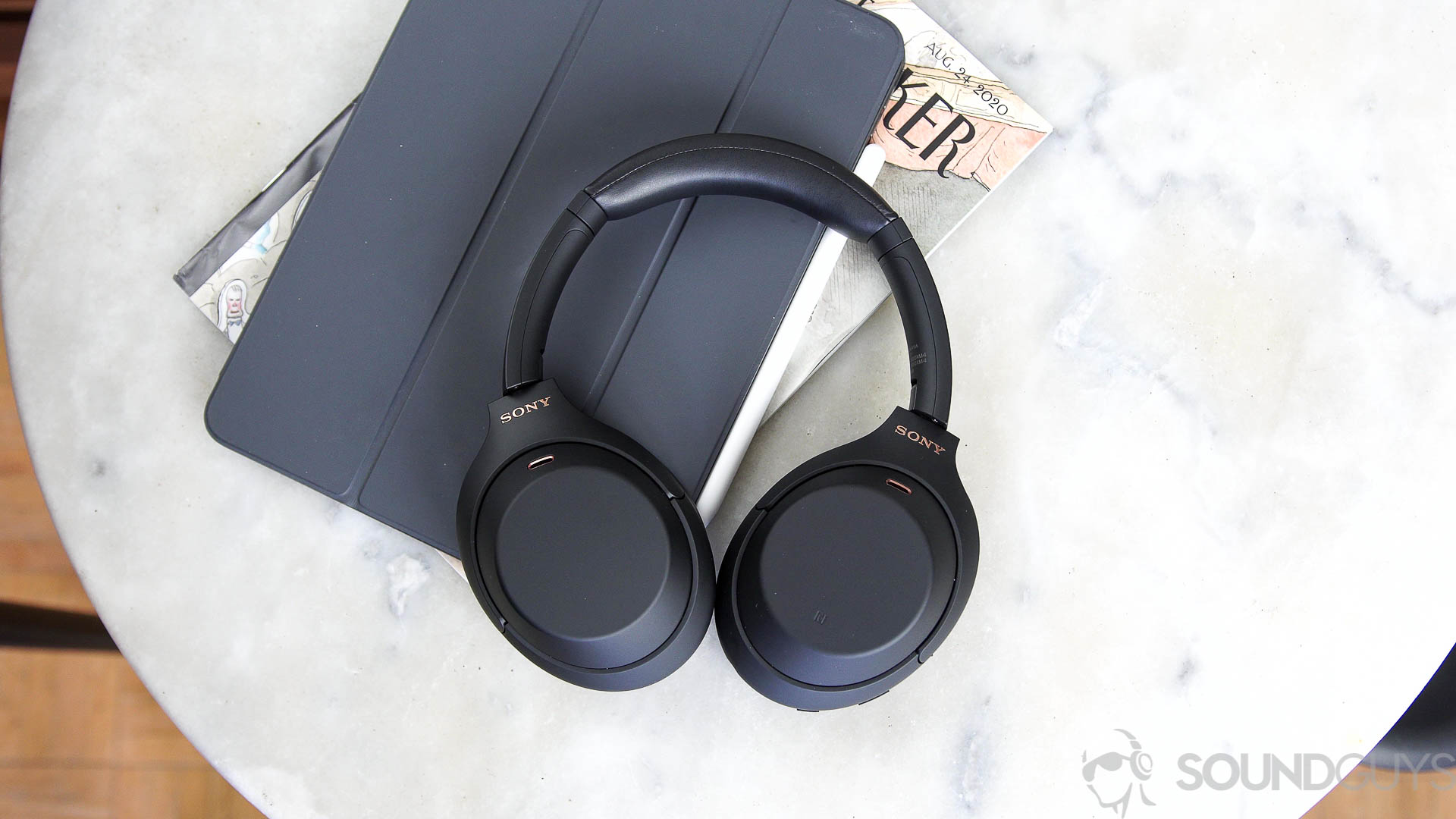
The Sony WH-1000XM4 noise-cancelling headphones have more effective ANC than the Bose QC 35 II, but cost significantly more (unless you happen to shop around during the holiday season). Bose’s headset still reigns king with regards to comfort, though, and sound quality is more accurate. Granted, you can equalize the sound profile of the Sony WH-1000XM4 and take advantage of features like Sony 360 Reality Audio, something that can’t be said of the Bose QC 35 II.
If you prefer touch controls and a more modern design, the Sony WH-1000XM4, may be worth your time. Sony packed in plenty of sensors and advanced software into its flagship headset, too. However, if you don’t want to bump up against that $300 price, the Bose QuietComfort 35 II will serve you well for a very long time.
What about the Apple AirPods Max?
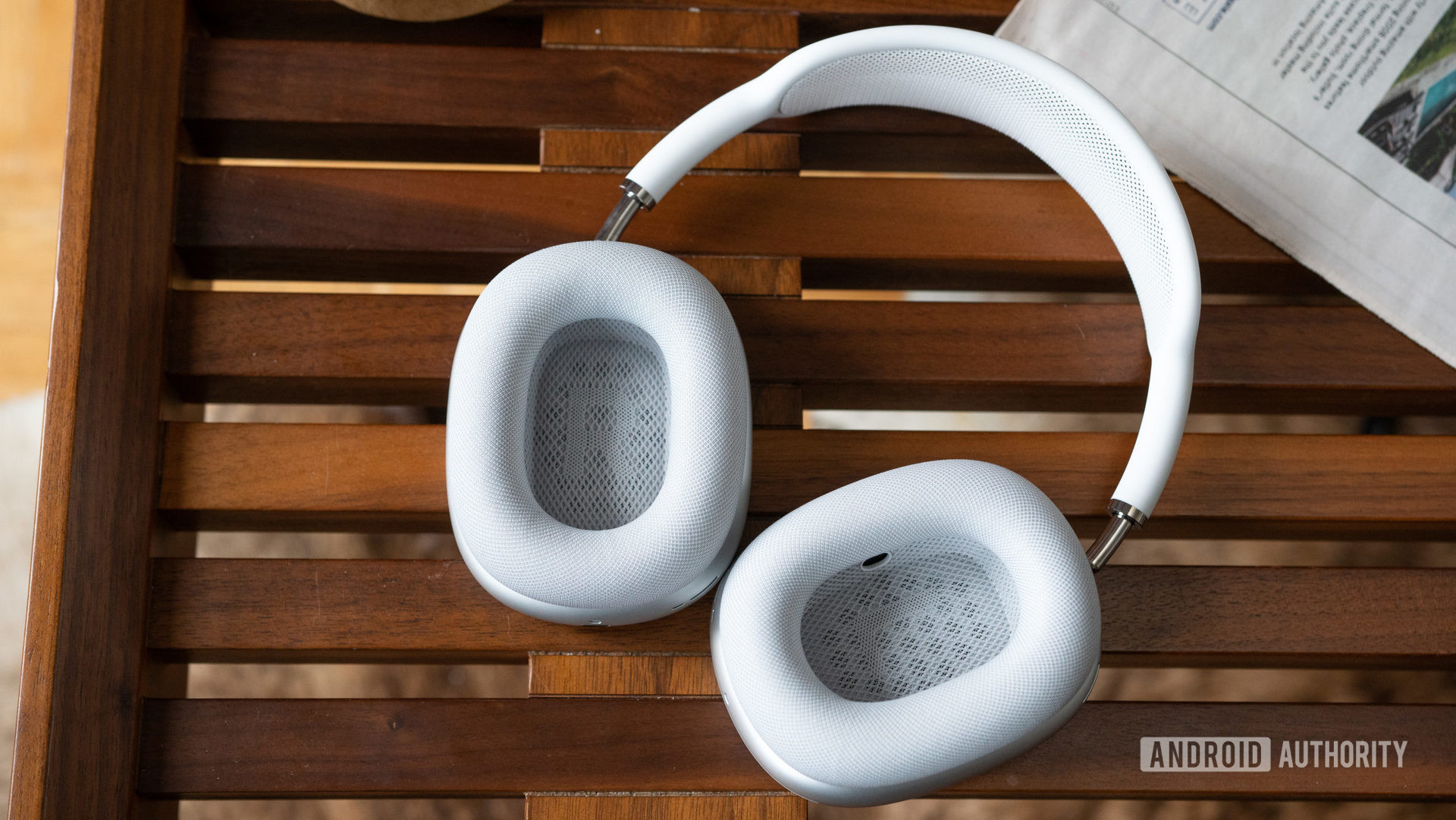
The Apple AirPods Max are Apple’s debut over-ear headphones, and they feature best-in-class ANC and a comfortable design. Each ear cup contains an H1 chip for optimal processing power, which is needed for tasks like hands-free Siri access, Transparency mode, Spatial Audio, and ANC.
Apple sticks to physical onboard controls in lieu of any touch panels on the headset, a surprise given all the ear cup real estate. Microphone quality is quite good, but dependent on your hardware: your voice will come through much clearer with an iPhone than it will with certain Android devices. To learn more, read SoundGuys’ first impressions of the AirPods Max.
Thank you for being part of our community. Read our Comment Policy before posting.